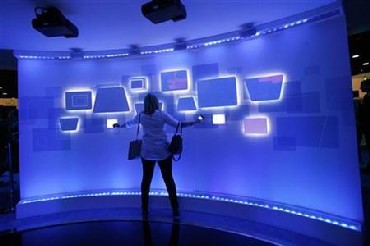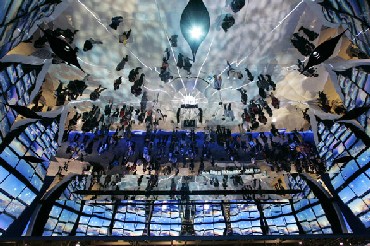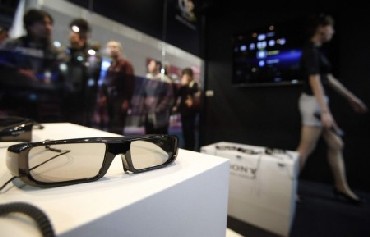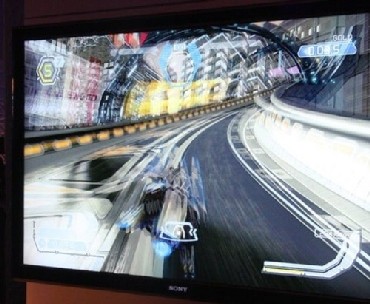 | « Back to article | Print this article |
It's all about 3D in 2011
It appears that 2011 will be the year of 3D again for the consumer electronics industry. While 2010 CES "was certainly defined by 3D" (included 3D content, hardware and services), 2011 CES will again play home to the entire 3D ecosystem, according to Shawn Dubravac, CFA, chief economist and director of research, Consumer Electronics Association.
Consider these launches.
Much of Panasonic's attention at the Consumer Electronics Show (CES) was devoted to 3D, which it predicted will capture almost a third of the worldwide TV market in 2014.
The company announced more 3D sets, Blu-ray players and five new consumer-grade 3D camcorders, with prices for the latter starting below $1,000.
Click NEXT to read more...
It's all about 3D in 2011
Likewise, Sony announced that it will add 3D to just about every visually-related product it makes, including a full line of 3D point-and-shoot cameras, camcorders, laptops and screens.
Samsung, too, announced a line-up of 3D TVs for 2011, including both LED and plasma models.
The Korean company assures that "almost all" of its 40-inch and above range released in 2011 will come with connected features, from access to Samsung's App Store to its new Smart Hub, that offers features like programme recommendations and comprehensive search through all connected content.
Click NEXT to read more...
It's all about 3D in 2011
Focusing on sleek, living room-enhancing design, Samsung has been reducing the bezel size, with some now as small as 5mm.
The LED D8000 series, which offers LED backlit 3D with a Clear Motion Rate of 800 and 2ms picture response time, comes with Bluetooth-enabled 3D glasses and a touchscreen TwinView remote with its own 3-inch screen.
Also in the 3D LED line-up are the Samsung D7000 series, which automatically configure the 3D settings for you, and the D6500 series.
And Toshiba plans to sell the world's first large 3D TVs that don't require viewers to wear special glasses (a major reason for 3D TV sales not picking up).
Click NEXT to read more...
It's all about 3D in 2011
Similar to the Philips lenticular prototype at IFA last September, Toshiba's flagship lenticular 3D TV is a 65-inch model, and is joined by a 56-incher and a 20 inch.
Lenticular printing is a technology in which a lenticular lens is used to produce images with an illusion of depth, or the ability to change or move as the image is viewed from different angles.
The company also announced the release of a 3D laptop prototype without the need for glasses.
LG Electronics also unveiled its "cinema 3D" LCD TV, which features the company's Film-type Patterned Retarder technology, which reduces flickering and overlapping images so that viewers can watch 3D content with less eyestrain.
Click NEXT to read more...
It's all about 3D in 2011
Expect to see more 3D than ever before. "We'll start with bigger, more feature-rich 3DTVs - a given. But 3D will expand wider than it did last year. We'll start with 3D eyewear where no standard exists (yet).
I expect to see several companies highlighting 3D active shutter eyewear solutions. Autostereoscopic - 3D without the need for eyewear - will be more pronounced this coming year.
I also expect to see 3D more pronounced in the rear-seat of the vehicle, in the palm of your hand through mobile devices, and digital signage," says Dubravac.





